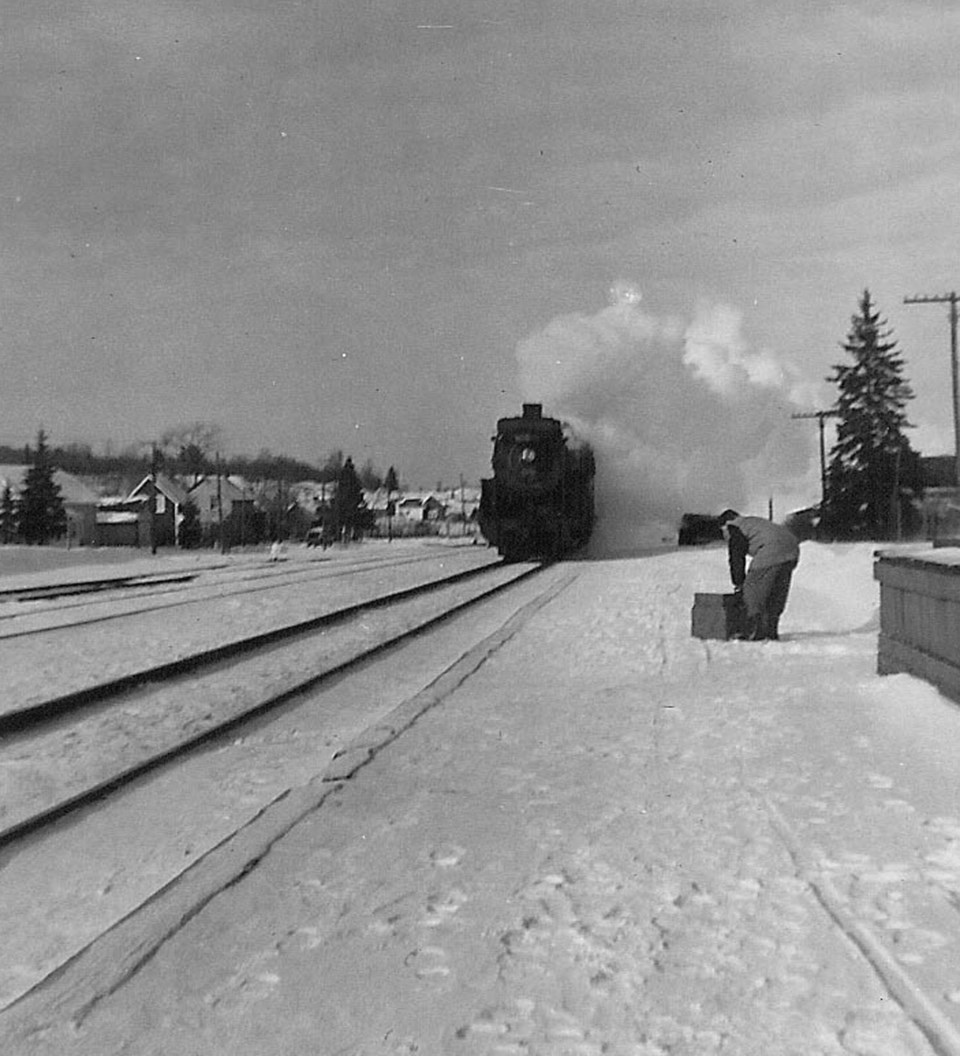The recent cold snap when the mercury slipped past the -40 mark brought back memories of yesteryear when it was really cold. You know I’m dating myself when I mention mercury in a thermometer since that was before we realized that the mercury was not a good thing. It was quite accurate for measuring temperature but coloured alcohol was a safer substitute.
We grew up in a poorly insulated frame farmhouse heated by a wood-fired kitchen cookstove and a new oil space heater in the front room. There was no forced air, only convection heating to the bedrooms upstairs. It was a few years before we installed running water in the old house and I remember having to break the ice on the galvanized pail of drinking water in the morning. There is no need to describe the experience of visiting the outdoor privy in the morning when the temperature was below 30. Below 40, you waited until it warmed up.
Thankfully, those cold snaps usually only lasted a couple of days and things would return to normal with minus 15 and 20 degrees. This was the pre-Celsius era but at -40 it was darned cold no matter how you measured it.
My Dad owned and operated a school bus and no matter the temperature, the bus made its rounds. Dad was ill for a while in 1955 and I drove the school bus (yes, I was 17) and I recall trying to start and turn around the Fargo school bus in the mornings when it was near -40. The engine was plugged in with a long extension cord but we often needed the battery from the farm tractor to assist in turning the engine over until it sputtered and coughed to life. (Manual choke - no electronic fuel injection back then). The bus had power steering but at minus 30 or colder it was worse than manual steering. It took several miles of driving before the hydraulic pump would stop squealing and work - fortunately, the road on the route was straight for a couple of miles.
Cold or snowy weather did not keep the bus at home, indeed it was more important to be on time as the students waited beside the road in their parkas and winter boots. That old Fargo would pump out a little warm air from the passenger heater by the time we got to the end of the route to pick up the first children. By the time we arrived at the school, some 30 minutes later, the bus would be almost comfortable.
On the rare occasions when the bus would not start, we would have to immediately get on the party-line phone and call each home along the route to say there was no school that day. There were very few days when the cold cancelled school. The Nipissing Central School was quite modern when built. It had hot water piped through the cement floors and that radiant heat was something the children looked forward to after a ride on a cold school bus. Walking the halls in sock feet was wonderful.
However, the coldest temperature I ever experienced was while working on the CN north of Lake Nipigon.
This was at the time nearing the end of the steam engine era and it was very important for the stations all along the division to send temperature readings to the train dispatcher. Steam engines lost their efficiency very quickly as the temperature dropped. Each station had a certified mercury thermometer that bottomed out at -60.
Our station at Ferland and the next station at Minatree seemed to be the coldest points on the Armstrong Subdivision. I remember calling in minus 58 degrees F one night. When the dispatcher checked with the operator at Minatree he said there was no reading - the mercury was all in the bottom of the tube. Thank heavens it was a calm night.
Now we live in a house that is heated by natural gas and electricity. It is reasonably well insulated and there is only a little fresh air sneaking in under the front door. Thank heavens and the City for indoor plumbing. At minus 40 the birds and squirrels know better than to come to the feeders so there is little need for us to leave the house until the temperature moderates.
However, there are people who are not so comfortably housed in the extreme cold, whether by choice or circumstance. I have an idea of how people living in remote areas deal with the cold just from my childhood experience but I cannot imagine how homeless street people cope without a warm shelter. We used to add layers of clothing to insulate us from the cold. Now there are better materials for winter wear but not all can afford them. Thank you to all the people and organizations that open their doors for shelter on cold nights.
I am comfortably down in Florida right now so you can imagine my surprise when there was a warning on television about the approaching cold front (from Oregon, not Canada this time). The Mayor declared that warming centres in Tampa would be open for the homeless that night and the next. The temperature might reach the freezing point. Donations of winter coats were requested for the homeless.
I guess it is all a matter of perspective but brisk walk down to Timmies for a cuppa on a cold morning is still something to treasure.



